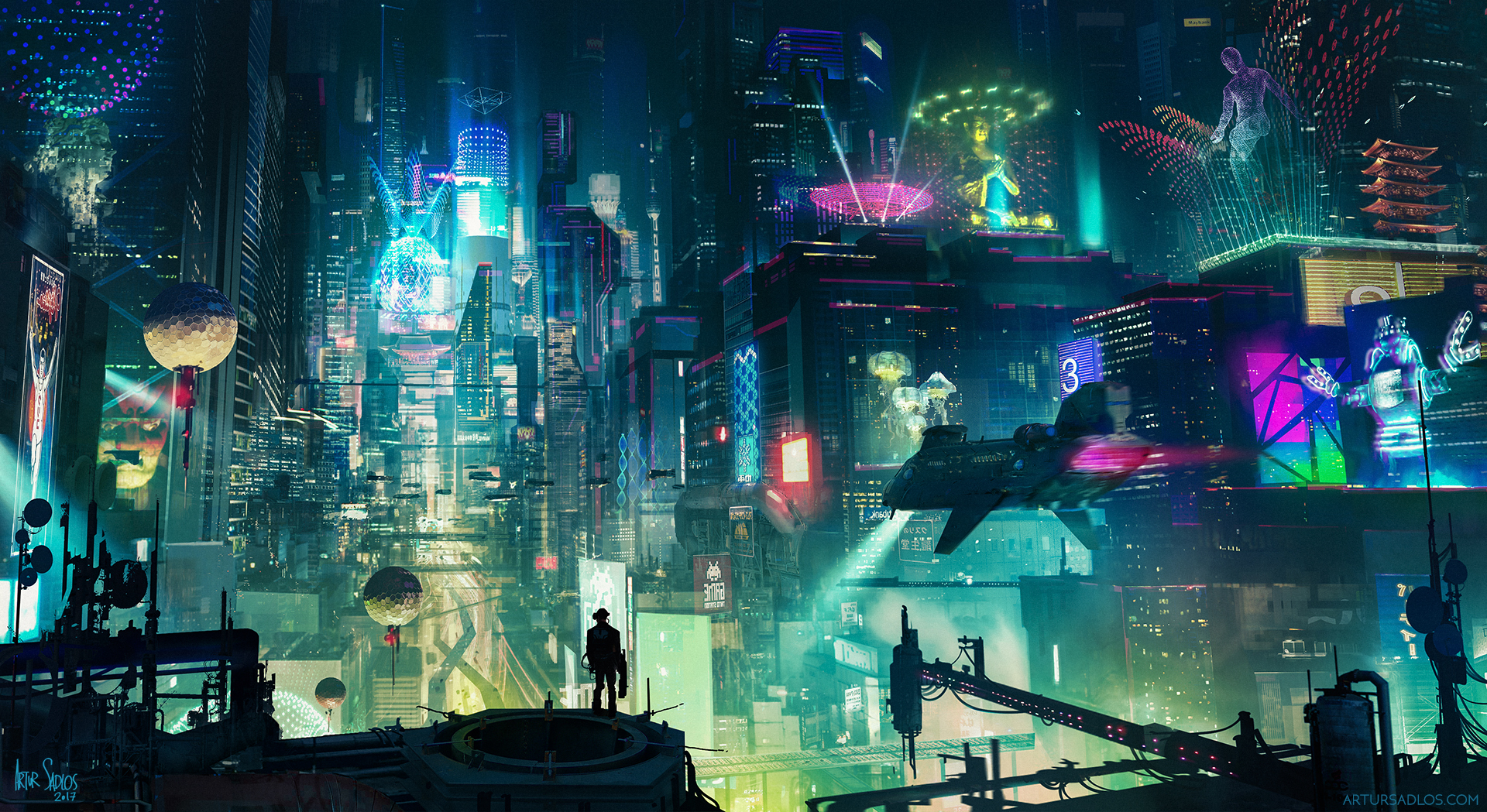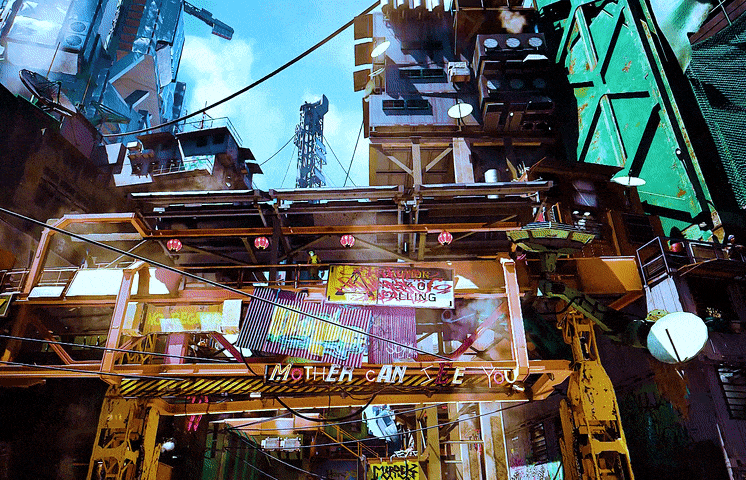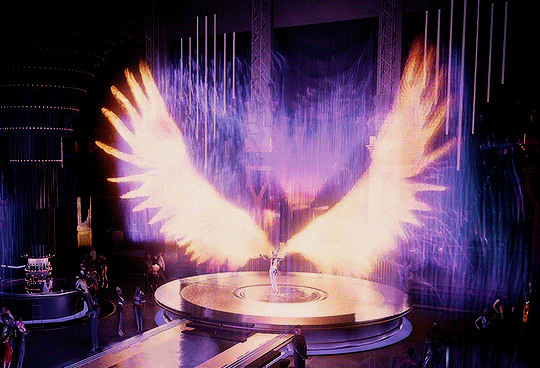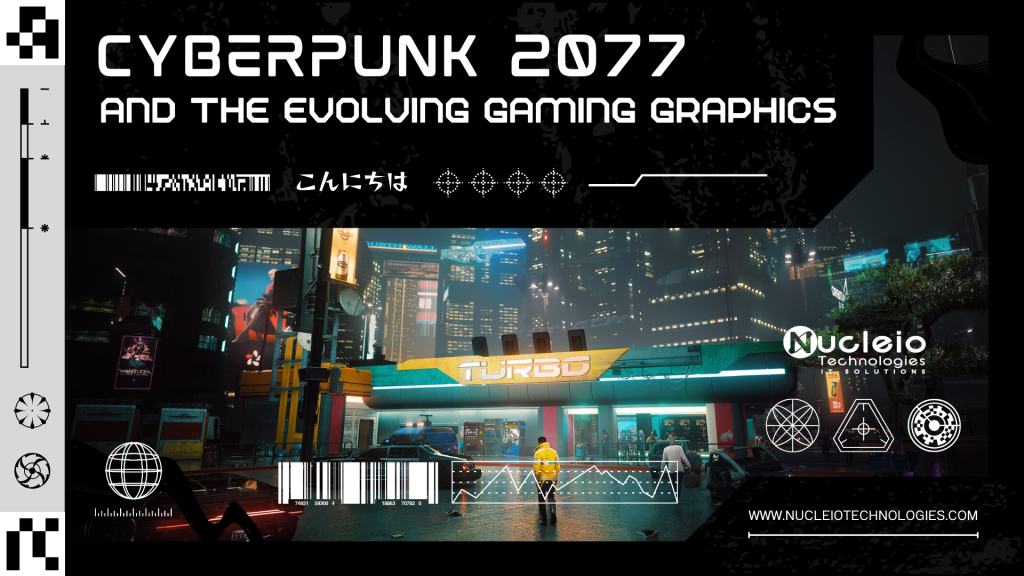In the world of gaming, visuals have always played a crucial role in shaping the player experience. From pixelated sprites to photorealistic landscapes, graphics technology has constantly evolved, enhancing immersion and realism. Nowhere is this evolution clearer than in Cyberpunk 2077, promising to redefine visual realism and elevate gaming graphics.

For decades, gamers have admired the growing detail of virtual worlds, from early arcade blockiness to today’s expansive AAA environments. Each hardware generation advances rendering, lighting, and animation, enabling developers to craft more lifelike and immersive experiences.
With Cyberpunk 2077, CD Projekt Red has set out to deliver a game that not only raises the bar for visual fidelity but also immerses players in a vibrant and dystopian future. Years in development, Cyberpunk 2077 epitomizes cutting-edge graphics, meticulous world-building, and a commitment to pushing gaming’s limits.

In this blog post, we’ll embark on a journey through the evolution of gaming graphics, tracing the history of visual realism from its humble beginnings to the groundbreaking achievements of Cyberpunk 2077. We’ll delve into the game’s promise, ray tracing’s significance, and Night City’s immersive atmosphere. We’ll also discuss the challenges and criticisms Cyberpunk 2077 encountered, and contemplate gaming graphics’ future in a dynamic landscape.
The History of Gaming Graphics

The history of gaming graphics is a tale of remarkable technological advancement, spanning from the humble beginnings of pixelated sprites to the breathtaking photorealism of modern titles. In the early days of gaming, limited hardware led to simplistic visuals; games like Pong and Space Invaders used basic shapes and colors. Atari 2600 and NES prompted developers to explore detailed sprites and backgrounds, heralding a new era in visual storytelling.
The Promise of Cyberpunk 2077

The promise of Cyberpunk 2077 lies in its ambition to redefine the standards of visual realism and immersive storytelling in gaming. With years of anticipation and meticulous development, Cyberpunk 2077 offers players a detailed and vibrant dystopian future. CD Projekt Red showcases dedication to advancing gaming graphics through Cyberpunk 2077’s detailed Night City and innovative ray tracing utilization. Lastly, it immerses players in neon-lit streets and towering skyscrapers, setting a new visual standard for gaming.
Raising the bar with ray tracing

Cyberpunk 2077 sets a new standard for visual fidelity and immersion in gaming. Ray tracing, an advanced rendering technique, creates lifelike reflections, dynamic shadows, and realistic environments by simulating light behavior in real-time. In Cyberpunk 2077, ray tracing isn’t just a visual upgrade; it transforms the gaming experience entirely. From Night City’s neon-lit skyscrapers to seedy nightclub interiors, its world exudes unparalleled depth and authenticity. By leveraging ray tracing, CD Projekt Red has crafted a visually stunning cyberpunk world, immersing players in its neon-lit streets from the outset.
Attention to detail


In Cyberpunk 2077, characters are meticulously crafted with an exceptional level of detail, contributing profoundly to the game’s immersive experience. Characters in Cyberpunk 2077, such as V and NPCs, are intricately designed with detailed expressions, clothing, and augmentations, resulting as realistic cast. Cyberpunk 2077’s extensive customization offers players a personalized experience, while meticulous animation brings characters to life, conveying emotions realistically.
Challenges and criticisms

Cyberpunk 2077, despite its ambitious scope and groundbreaking visuals, has faced its fair share of challenges and criticisms since its release. The game’s troubled launch on last-gen consoles, like PlayStation 4 and Xbox One, saw technical glitches and performance issues. Moreover, player frustration prompted CD Projekt Red to apologize and promise post-launch patches to address technical issues. The marketing campaign, displaying pre-rendered footage not matching the final product, led to accusations of misleading advertising and player disappointment. Despite challenges, Cyberpunk 2077 remains ambitious, sparking discussions on gaming industry standards and developers’ ethical responsibilities.
The Future of Gaming Graphics

The release of Cyberpunk 2077 has undeniably left a significant mark on the gaming industry, offering a glimpse into the future of gaming graphics and inspiring developers to pursue new heights of visual fidelity and immersion. Additionally, it also demonstrates how innovation, like ray tracing, can create breathtakingly realistic virtual worlds as technology advances. Cyberpunk 2077’s impact on the gaming industry will drive further refinement of graphics technology, inspiring developers to create immersive experiences.

Preem! As we eagerly anticipate the next generation of gaming graphics, let us remember the lessons learned from Cyberpunk 2077’s journey—a reminder that with dedication, ingenuity, and a commitment to excellence, the future of gaming holds limitless potential for breathtakingly realistic and unforgettable adventures.

